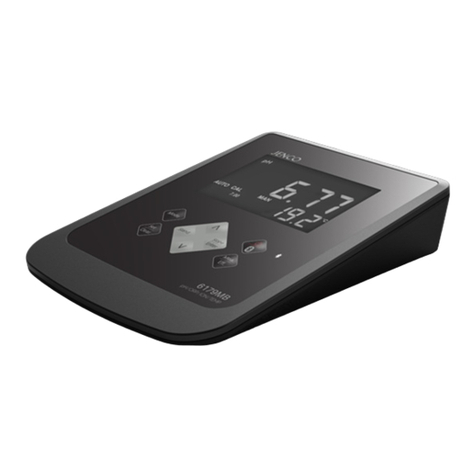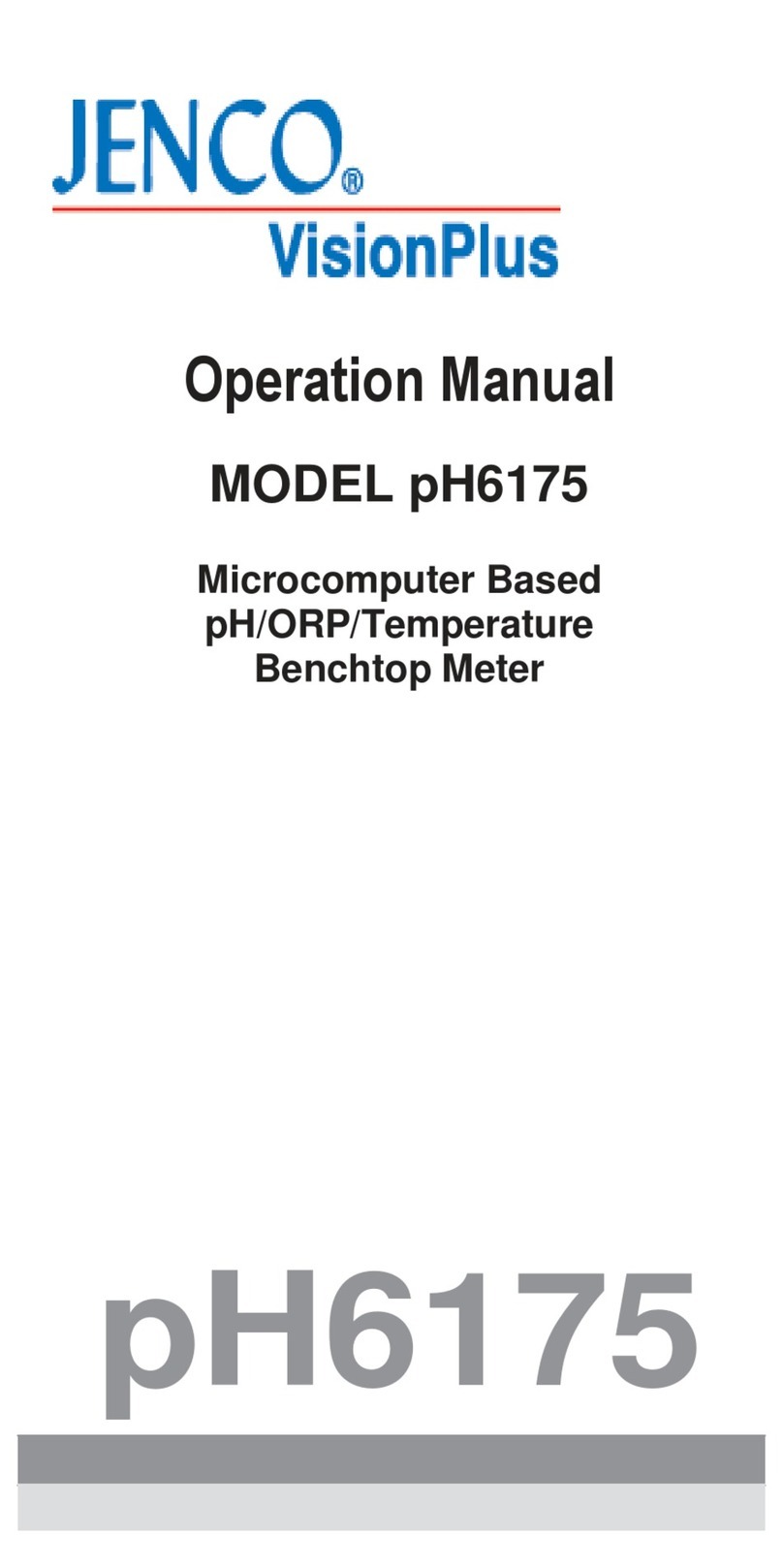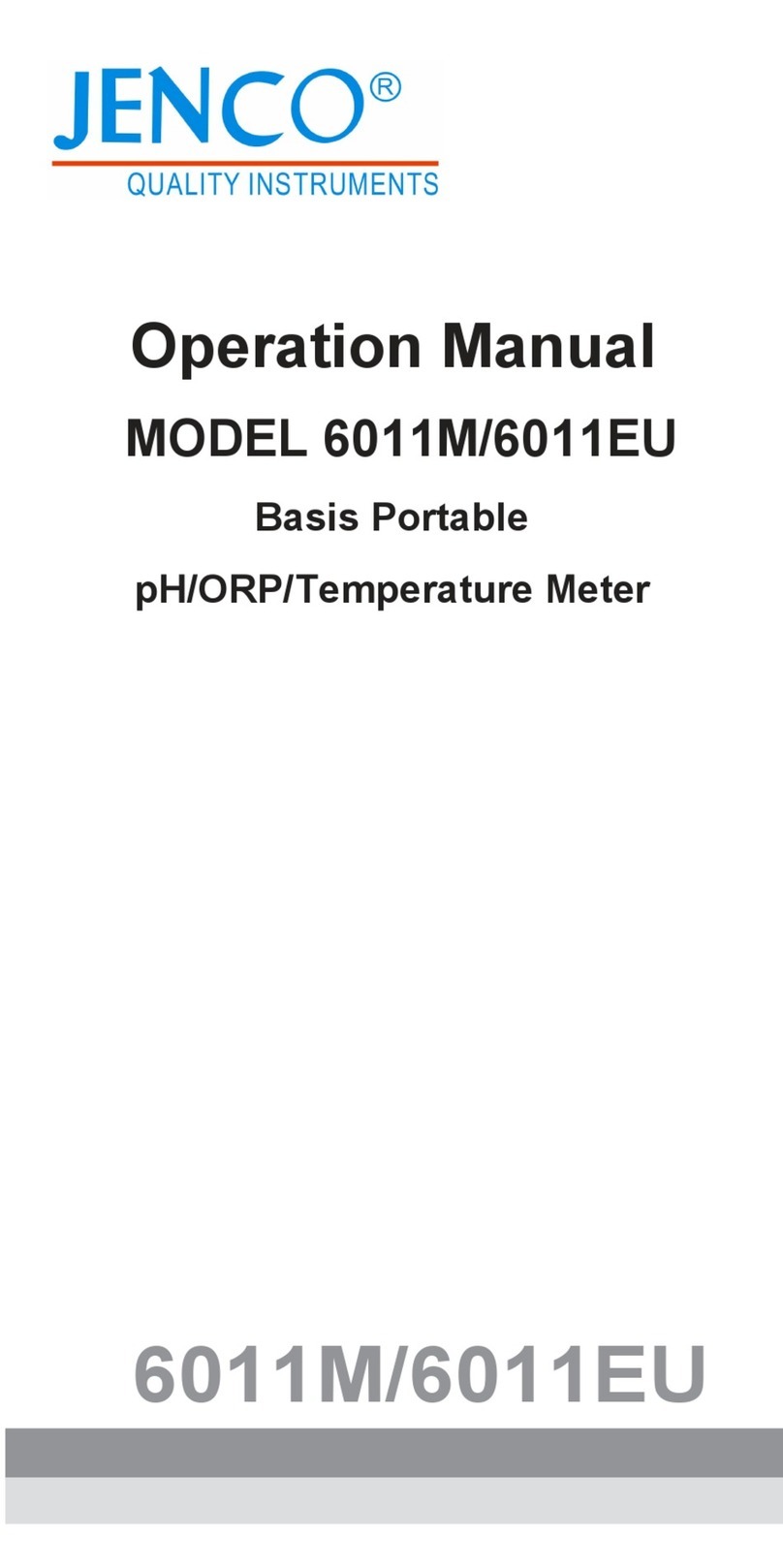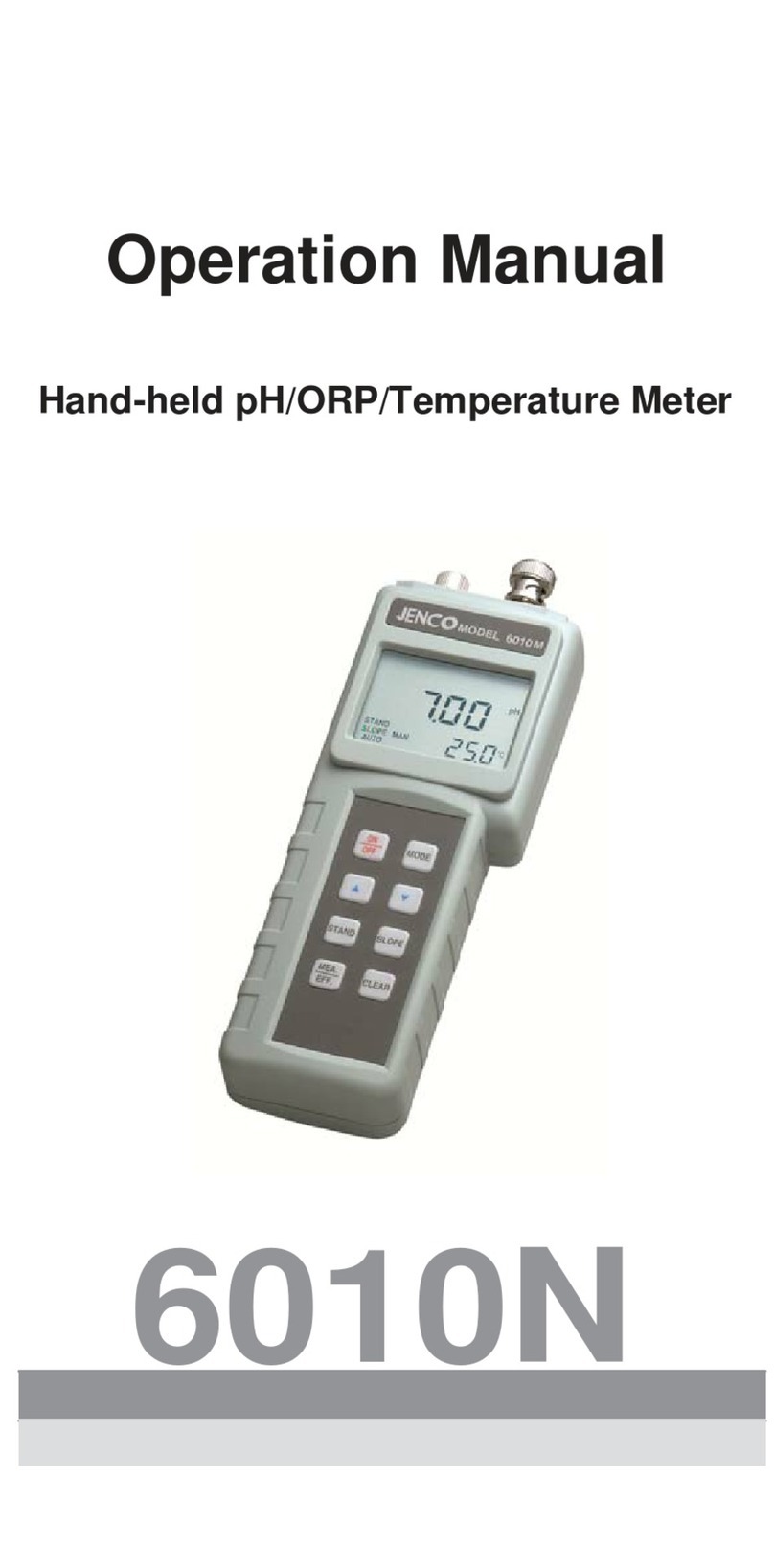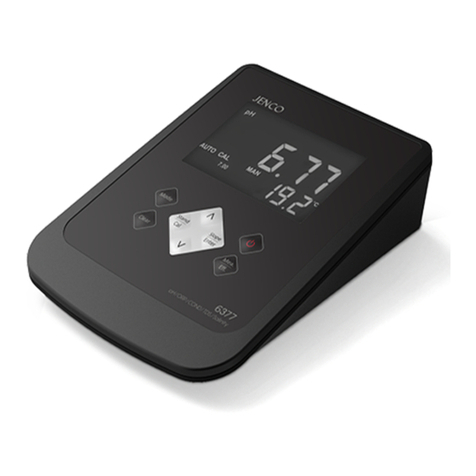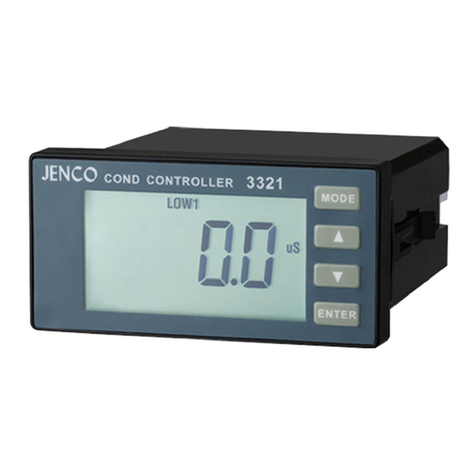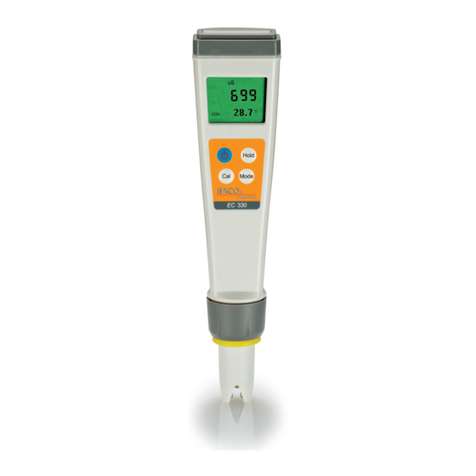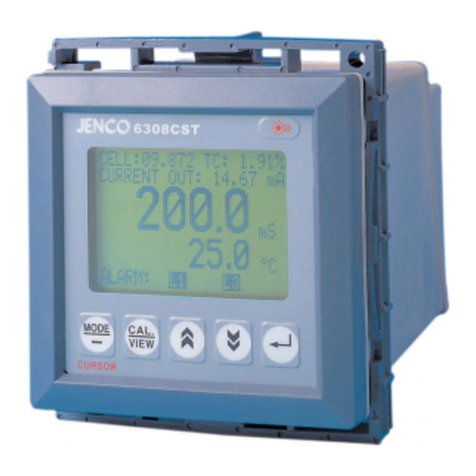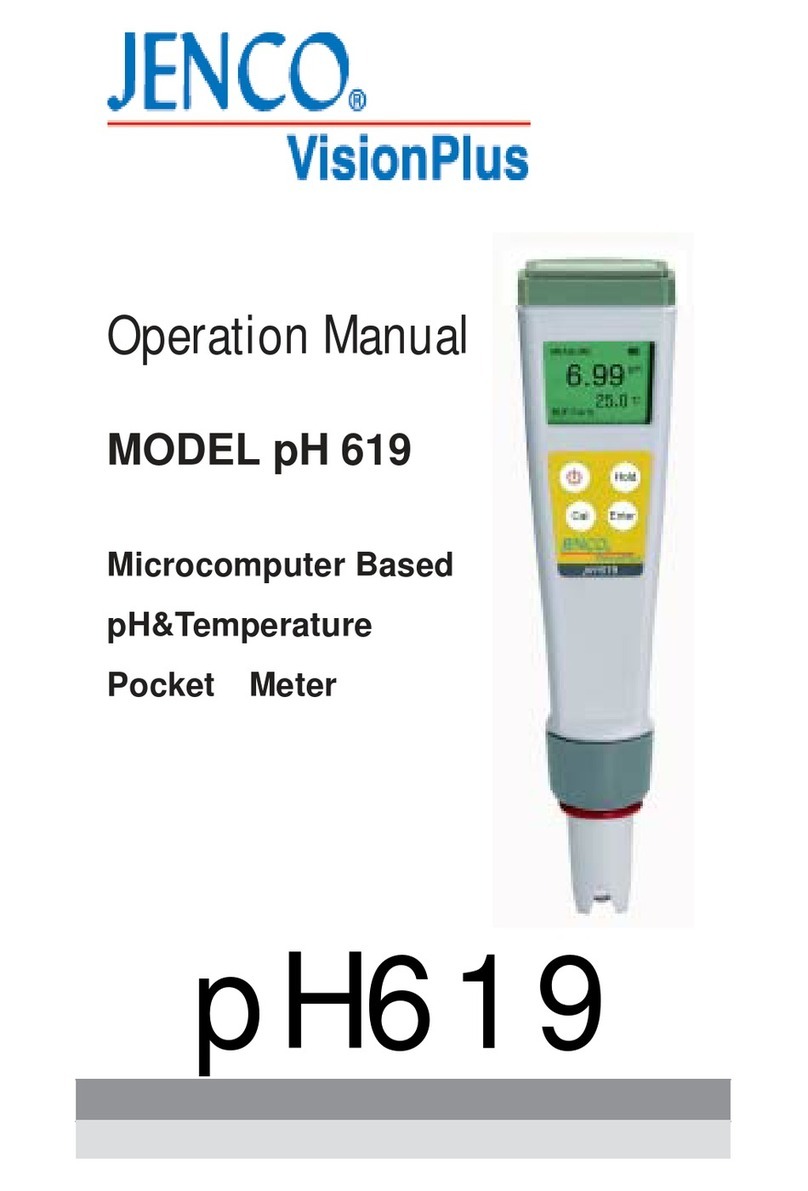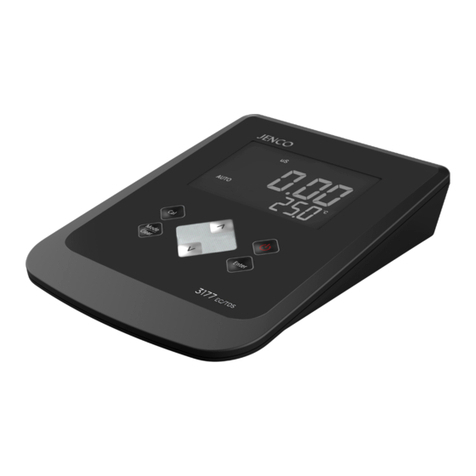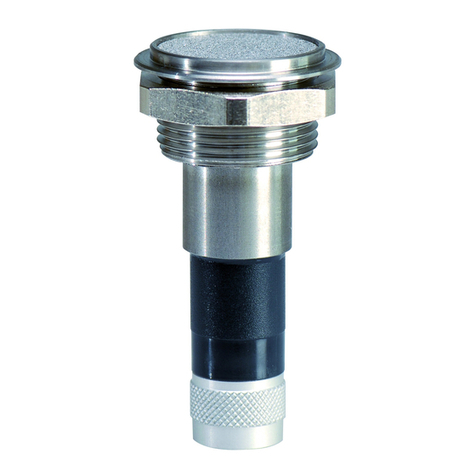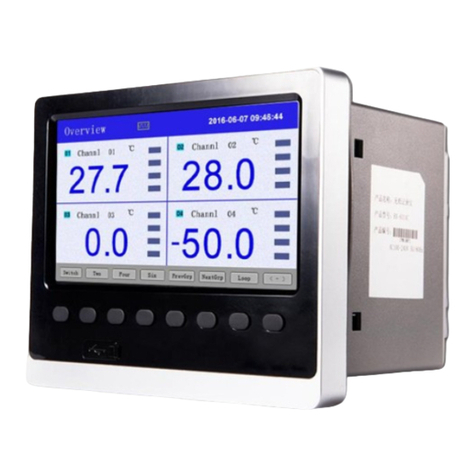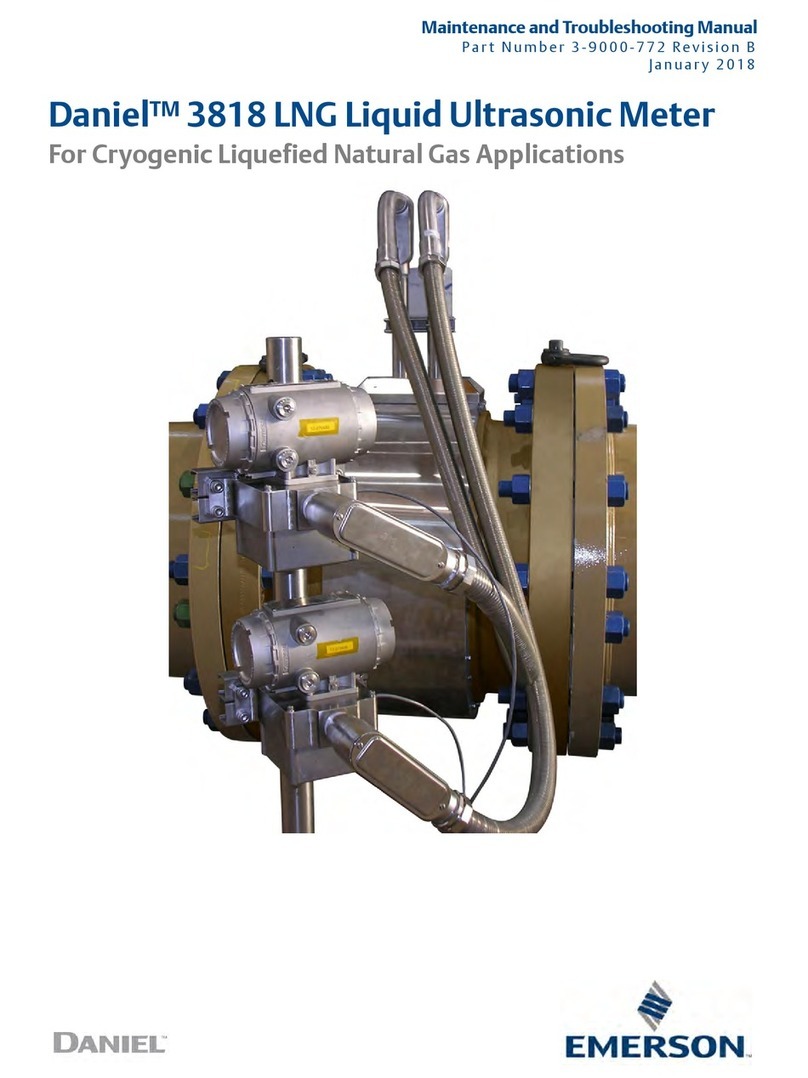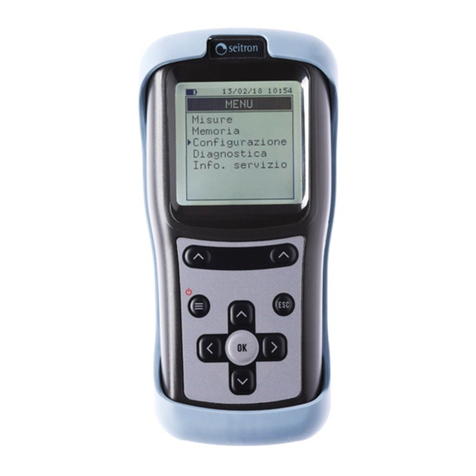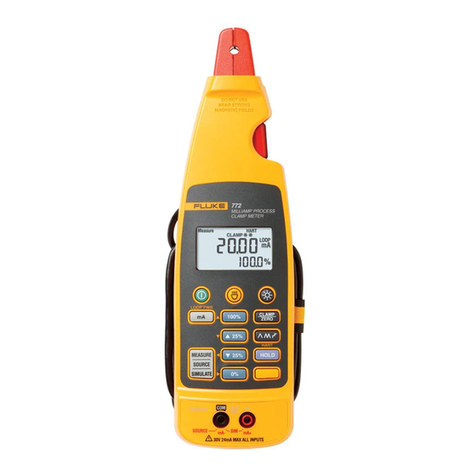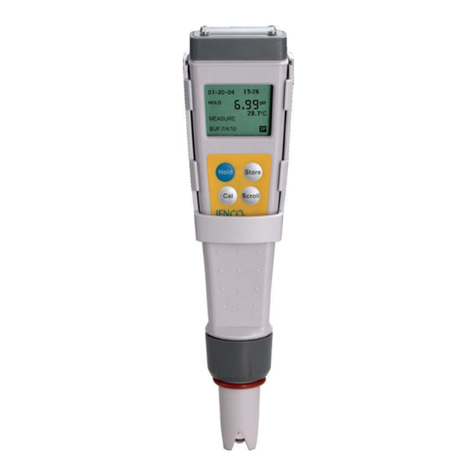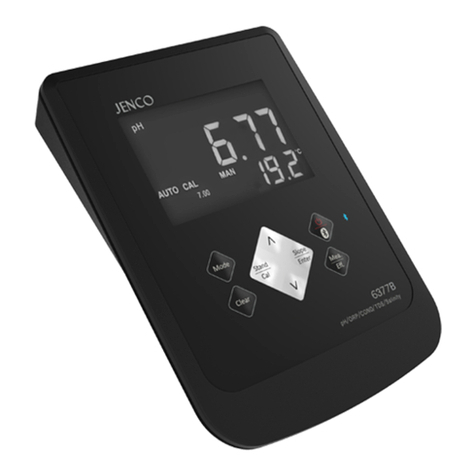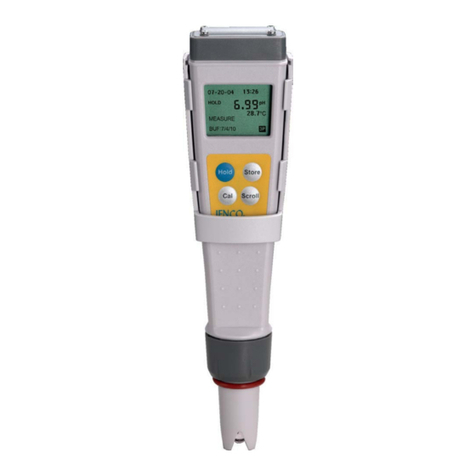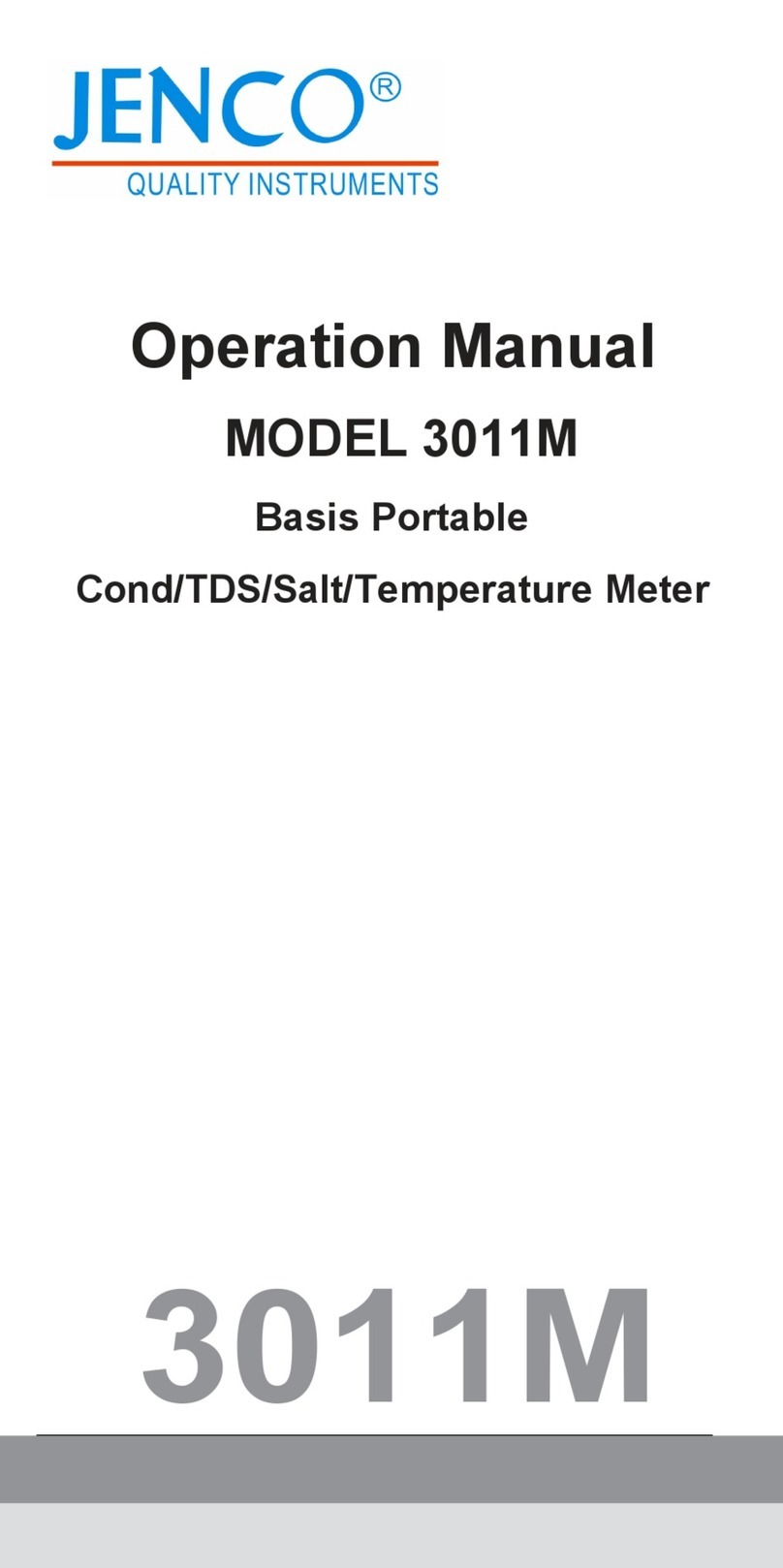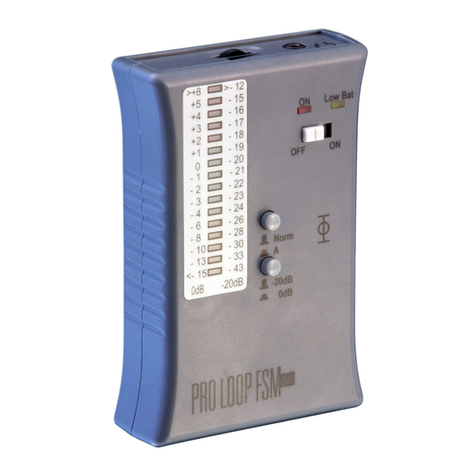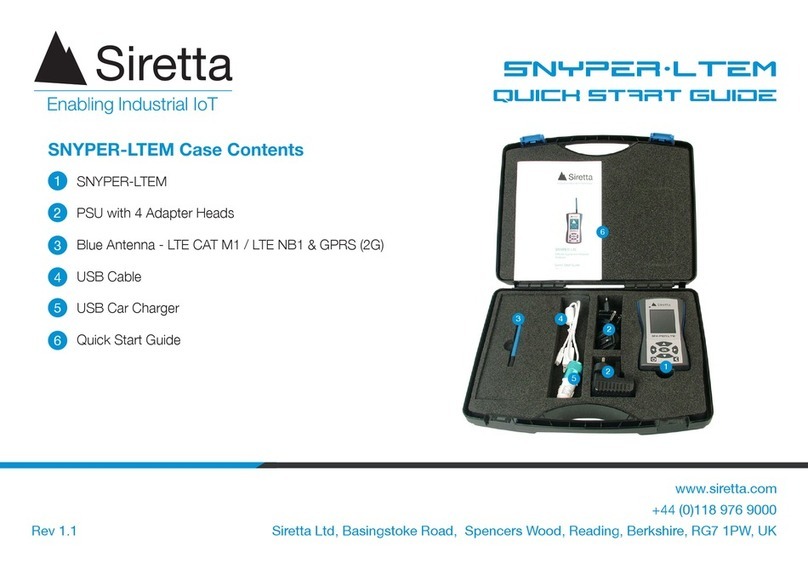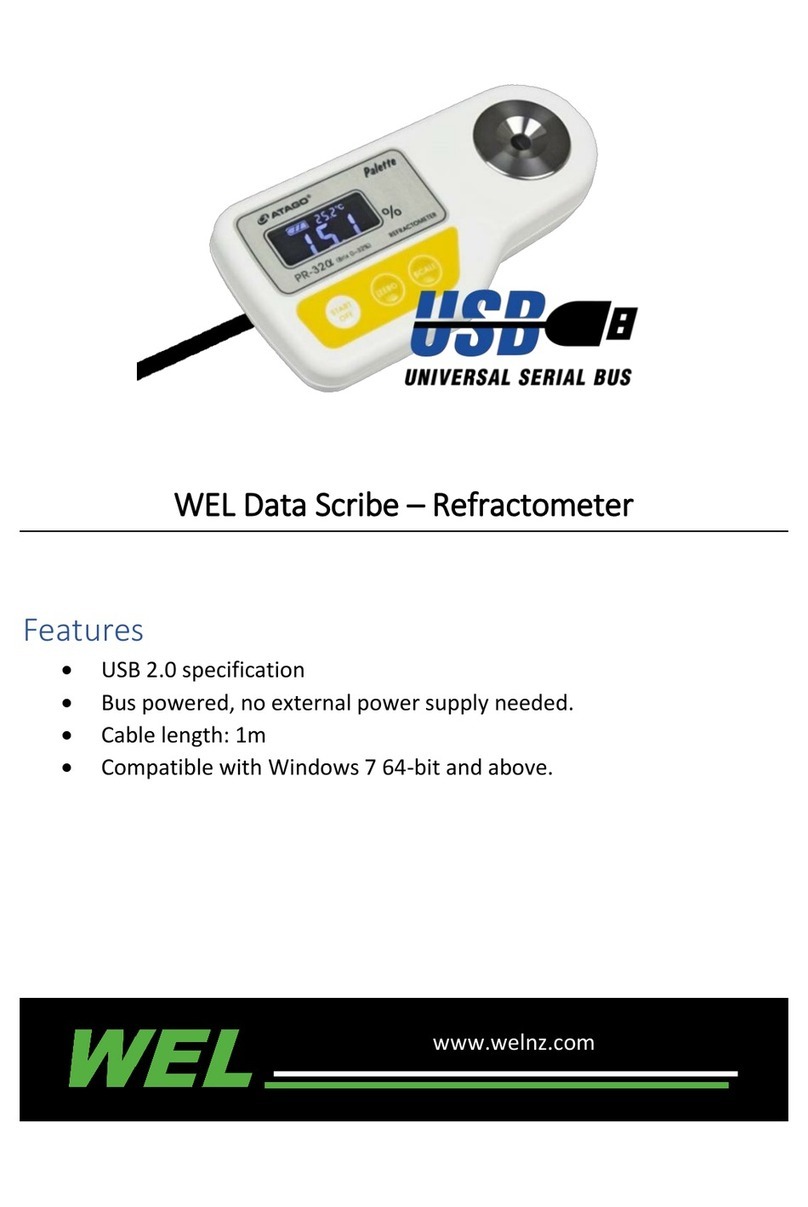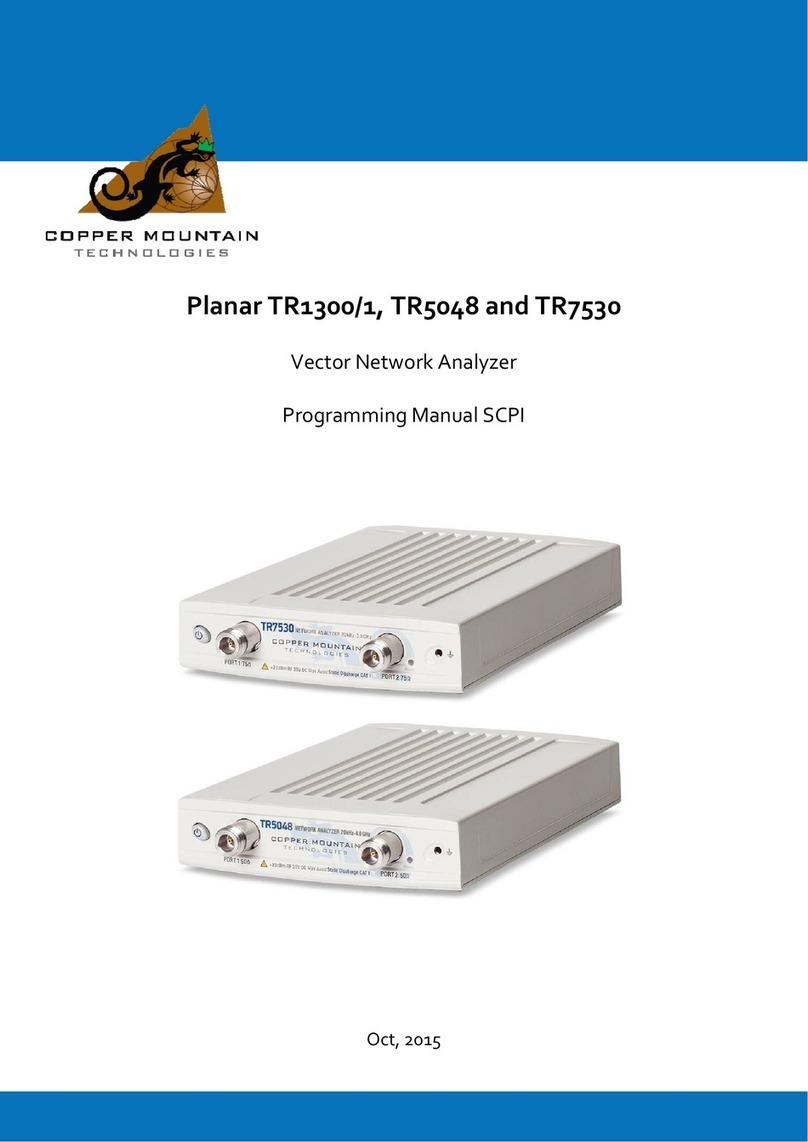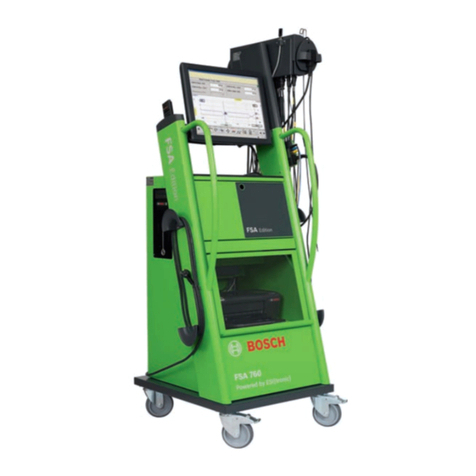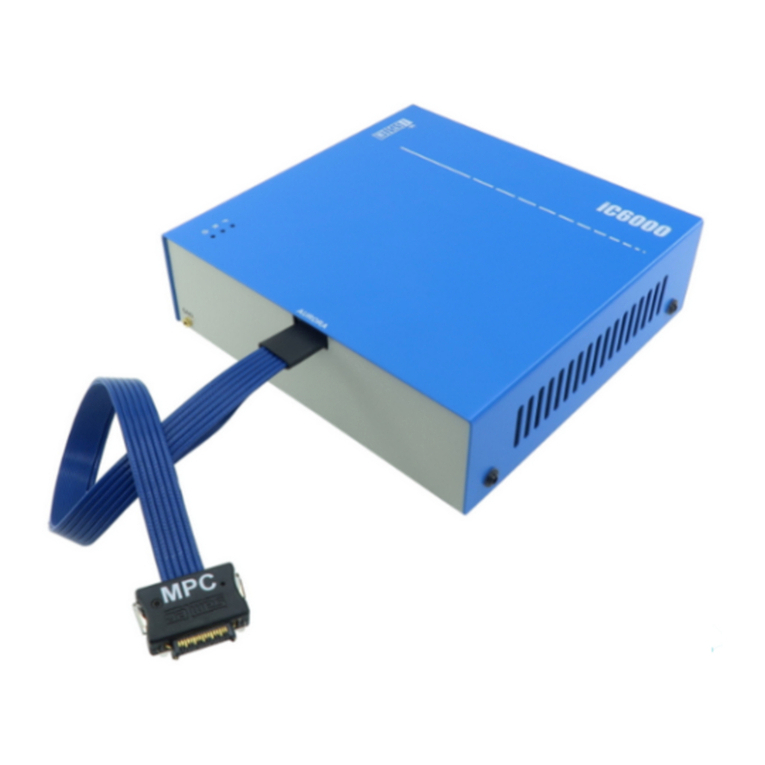
[Note: If the first buffer solution is 7.00 or 6.86 pH, at this
moment, press the “Mode” key, the unit will exit the calibration
mode. Single point calibration is complete.
If the first buffer solution is 1.68, 4.00, 4.01, 9.18, 10.01 or
12.46 pH, at this moment, the unit will automatically exit the
calibration mode. Single point calibration is complete.]
4. Rinse the pH and ATC/Temp probe in distilled water and
immerse them in the second buffer solution (either 4.00/4.01
pH or 9.18/10.01 pH corresponding to the flashing number on
display). Allow temperature reading to stabilize, then press
“Slope/Enter” key to calibrate. The unit immediately
calibrates the second point, the selected two buffers lit up and
the remaining buffer starts to flash. The unit is ready to be
sloped at the third buffer.
[Note: At this moment, press the “Mode” key, the unit will
exit the calibration mode. Dual point calibration is complete.]
5. The third point, the fourth point and the fifth point are the
same as the second point calibration. When the unit
completed the fifth point calibration, press the “Mode” key
and exit the calibration.
6. The unit calculates and compensates for the pH electrode
slope deviation corresponding to the values of the calibrated
buffers. After calibration, press and hold “Mea./Eff.” key for
about 5 seconds to display the new electrode efficiency and
offset.
d. Calibration with manual temperature compensation in the
pH NON-AUTOLOCK mode.
1. Turn the unit on. In pH mode, press “Clear” key for 5 seconds,
all LCD elements will lit up. The meter clears all calibration
values stored in internal memory.
2. Connect the pH electrode to the BNC connector of the unit,
“MAN” icon will lit up. Press “Mode” key to select “pH” mode.
“pH” icon is on. The "CAL" icon will begin to flash.
3. Rinse the pH probes in distilled water and immerse it in the
first buffer solution. Adjust the temperature reading to that of the
first buffer using the “Up” or “Down” keys (0.0 to 60.0 ℃)
before pressing “Stand” key. Then press and hold “Stand”
key for 2 seconds to calibrate. The unit immediately calibrates
the first point, the selected buffer remains lit up while the
remaining buffers start to flash. The unit is ready to be sloped
at the second buffer.
[Note: If the first buffer solution is 7.00 or 6.86 pH, at this




















